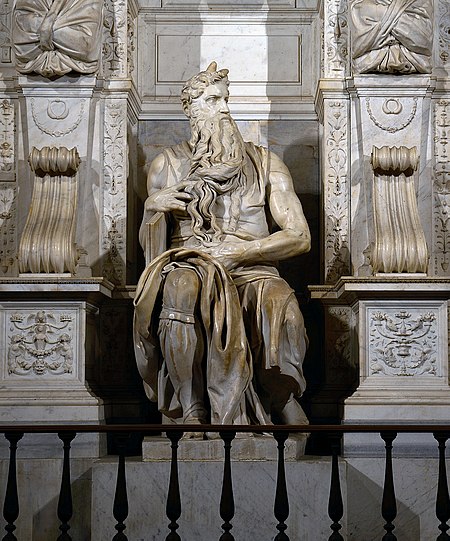Moses (Michelangelo)
1510s sculpturesAntisemitism in ItalyMarble sculptures in ItalyPages with numeric Bible version referencesSculptures by Michelangelo ... and 3 more
Sculptures depicting Hebrew Bible peopleSculptures of MosesTomb of Pope Julius II

Moses (Italian: Mosè [moˈzɛ]; c. 1513–1515) is a sculpture by the Italian High Renaissance artist Michelangelo Buonarroti, housed in the church of San Pietro in Vincoli in Rome. Commissioned in 1505 by Pope Julius II for his tomb, it depicts the biblical figure Moses with horns on his head, based on a description in chapter 34 of Exodus in the Vulgate, the Latin translation of the Bible used at that time.
Excerpt from the Wikipedia article Moses (Michelangelo) (License: CC BY-SA 3.0, Authors, Images).Moses (Michelangelo)
Piazza di San Pietro in Vincoli, Rome Municipio Roma I
Geographical coordinates (GPS) Address Nearby Places Show on map
Geographical coordinates (GPS)
| Latitude | Longitude |
|---|---|
| N 41.893772222222 ° | E 12.493305555556 ° |
Address
Basilica di San Pietro in Vincoli
Piazza di San Pietro in Vincoli 4/a
00184 Rome, Municipio Roma I
Lazio, Italy
Open on Google Maps











